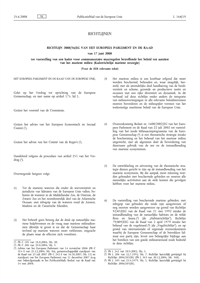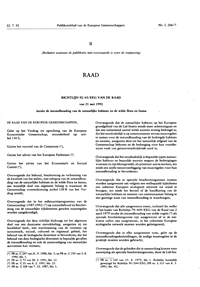In the European Union, two key legal instruments exist for the protection of marine habitats: the EU Habitats Directive (HD) and the EU Marine Strategy Framework Directive (MSFD). Under MSFD the aim is to protect the marine environment and to reach a good environmental status (GES). The implementation of MSFD focuses on 11 descriptors including “Biodiversity and “Sea floor integrity”. The EU Habitats Directive requires Member States to aim for the conservation and protection of important or threatened species and habitat types, for which a network of marine protected areas, the Natura 2000 network, is designated. In Belgium, the zone ‘Vlaamse Banken’ was designated as a
marine protected area and there are two habitat types that need protection. The first habitat - type 1110 “Sandbanks which are slightly covered by sea water all the time” - represents the main habitat type of the Belgian part of the North Sea (BPNS) covering its entire surface area with a geologically unique sandbank system. Gravel beds and Lanice conchilega biogenic aggregations, that can be found within sandbank systems, are classified as habitat type 1170 “Reefs”, which is the second habitat type to protect. For both habitat types, specific conservation objectives, which were aligned with the environmental targets as set under the MSFD, were adopted in 2017 and revised in 2021. Hence, the Belgian implementation of both directives is done by translating the requirements into one integrated approach.
The evaluation of the environmental targets and the conservation objectives under the MSFD and HD has revealed that the GES (as evaluated by MSFD) or the favourable conservation status (as evaluated by HD) is not reached for the benthic habitats. To accomplish GES and favourable conservation status, sufficient areas of both habitats (habitat 1110 and habitat 1170) need to be protected. In this report, we focus on the restrictions for bottom disturbing fishery (see 5.3) that need to be taken as they pose one of the main threats to restoring and preserving bottom integrity which is essential in order to reach GES and the conservation objectives under the HD. Other restrictions for bottom disturbing activities (e.g aggregate extraction, construction works, cable laying) need to be considered, but they need to be applied within the federal Marine Spatial Planning (MSP) procedure, and are therefore not further discussed in this report. Based on scientific knowledge on the habitat type three Search Zones were established in the MSP 2020-2026 in which taking measures to restrict bottom disturbing activities (e.g. fishery) are expected to be necessary and effective. The MSP 2020-2026 (art 6.) provides a legal basis for spatial restriction to fisheries within these search zones. Subsequent measures need to comply with the European procedures (Regulation (EU) No. 1380/2013 of the European Parliament and of the Council of 11 December 2013 on the Common Fisheries Policy).
This report describes and covers most of the input required for the background document that is needed for taking conservation measures under the Common Fishery Policy and contains: - An overview of the conservation objectives and environmental targets of relevance - Scenarios to select key areas for restrictions of bottom disturbing activities
- An up-to-date distribution map of the benthic habitats and their biological value
- A sensitivity evaluation of the benthic habitats
- A review on the sea-bottom impact of the different fishing métiers
- Conservation measures (e.g. fishery, other bottom disturbing activities) to take
- Detailed socio-economic analyses of the fishery activities within the BPNS




